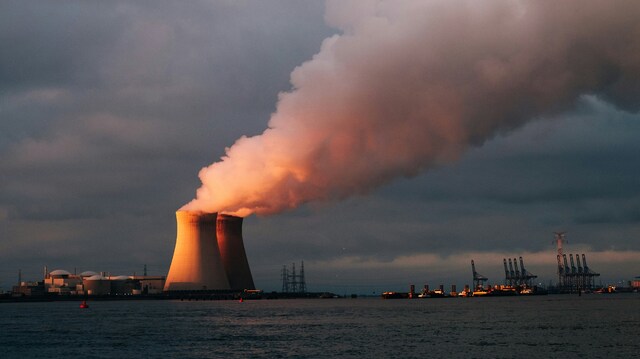European and Chinese Emission Trading Scheme

The main idea of an emission trading scheme (ETS), or carbon market, is the idea that regulators should set mandatory limits for GHGs emissions and issue permits to pollute up to the given limit. These permits are traded among companies and their price is given by demand and supply, while companies can either stay below the limits or exceed by purchasing more permits – with the consequence of increasing their price.
The system should push emissions’ reduction without negatively affecting the economy’s competitiveness with the painful consequence of industrial relocation in countries with no emission limits, a risk that is particularly concrete in the case of carbon pricing – a tax on the emissions – and that is at least partially prevented by emission trading schemes (Quercia, 2019). This apparent possibility to conciliate the emission trading scheme with economic competitiveness and the fact that the system is not definable as a tax make it easier to be accepted by companies and private sector as such, a factor that played a significant role in motivating the EU’s adoption of ETS in 2005 (European Commission).
Chinese Emission Trading Scheme
Given its commitment to COP21’s goals, China found a useful tool in the emission trading scheme developed by the EU and started its own programs in 2017, with the achievement of its implementation in major cities by August 2018. The whole process had a slower begun than expected due to the needed regulatory reorganization that saw the Ministry of Ecology and Environment as the authority in charge of the carbon market (Bloomberg News, 2019).
According to most recent forecasts, China should open the first trade in 2020 and, according to vice director of the climate change department at the Ministry of Ecology and Environment Jiang Zhaoli, the ETS will include both power sectors and the most energy intensive industries “such as steel, non-ferrous and construction materials” (Xu and Martina, 2019). Furthermore, China is intentioned to explore “carbon derivatives trading and non-gratuitous allocation of emission quotas in 2021-2025” (Xu and Martina, 2019), with the aim of covering 8 billion tonnes of CO2 emission per annum from around 100 000 industrial plants with ETS in full operation (Xu and Martina, 2019).
EU vs. Chinas´ Experience
The ETS was seen by China as a valuable tool to promote its ecological transition, but this strategy is not coming without risks. The EU experience provides an insight: to prevent the loss of competitiveness, the Commission provided companies with free allowances for facing carbon leakage risk in their operations. However, the companies in the carbon leakage list are responsible for the production of around 97% of ETS industrial emissions, so that these same companies are not paying for their pollutive activities (Quercia, 2019). In addition, the whole distribution of free allowances was related to plants’ production levels before the 2008 crisis, in order to cover emission from the manufacturing sector. After the crisis, free allowances were not adjusted to new production levels and ended up overcompensating certain companies which also sold their excess allowances without committing to any emission cut (Quercia, 2019).
As long as distribution of free allowances does not follow actual annual production levels, the system is heavily imbalanced and risks incentivising not efficient and polluting behaviours, while a self-correcting system can provide the issuing regulator with more revenues to invest in low-carbon technologies and incentivise commitment to emission cuts from industries (Quercia, 2019). This choice should be the prelude to the complete withdrawal of free allowances as such and their substitutions with other measures to save competitiveness as, for example, border tax adjustment to impose a fair carbon price on imports in case of different carbon cost (Mittal, 2017). This measure will avoid that the higher production costs coming from carbon pricing and ETS will penalize European companies against foreign cheap and pollutive imports.
Consequences on Economy
Chinese commitment to implement ETS was declared in several moments but its consequences on economy are probably much broader than the simple reduction of CO2 emissions. Despite the clear importance of fighting climate change, the Chinese ETS will likely contribute to worsen the economic conditions of some involved categories: according to scholars, the consequent shift of the industrial structure will increase unemployment rate in the most energy-intensive industries – with up to 75% less employment in coal sector by 2050 – (Huang et al., 2019). Moreover, the categories that will feel the impact of transition will likely be less educated since low skilled labour are frequent in coal industry, so social costs of this shift will have to be faced by Government so that those groups will not pay the costs of the ETS implementation.
On the other hand, same scholars affirm that ETS implementation can have a positive impact on Chinese economy since it could increase GDP by 3% by 2050 (Huang, 2019) through efficiency improvement and income redistribution from producers to consumers, facilitating economic transition (Huang, 2019).
If China aims to develop an effective ETS, it is necessary that its Government fully understands the limits that the European Union’s experience faced and that its own system will not follow the same path. Otherwise, the risks is that the whole process will generate unfair revenues and will not prove to be a tool for significantly reduce C02 emissions. According to the Internal Carbon Action Partnership (Last Update: 9 April 2019) explains that free allocation in Chinese ETS will be ex-post adjusted “for changes in actual production”. The whole process could be more ambitious, but for now it seems that China will implement a strategy that corrected at least one critical aspect of its predecessor. Chinese Government has also to keep increasing “the proportion of emitting activities covered by auctions while remaining attentive to appropriate revenue distribution strategies” (Huang et al., 2019) so that the ETS will adjust to changes within national economy and labour market.
China has the chance to cooperate with the EU in order to improve its ETS and both sides can learn from each side’s best practises and expertise. The EU is already providing China with its support through sharing of information and know-how, and the exchange is expected continue in following years (Maroš Šefčovič, 2019). Climate change is a shared threat that requires global solution and cooperation among economic powers is necessary to succeed in tackling it. Thus, an EU-China ecological cooperation is an achievement that can promote transition to a cleaner and more sustainable development worldwide.
Sources:
China is Dawdling on Carbon Trading. Bloomberg News, 2019. Available online at: https://www.bloomberg.com/news/articles/2019-05-07/china-dawdles-on-carbon-trading-as-reshuffle-slows-development.
Huang, H. et al. (2019) Emissions trading systems and social equity: A CGE assessment for China. Applied Energy 235, 1254-1265. Available online at: https://www.sciencedirect.com/science/article/pii/S0306261918317628.
International Carbon Action Partnership (2019). China National ETS. Last Update: 9th of April. Available online at: https://icapcarbonaction.com/en/?option=com_etsmap&task=export&format=pdf&layout=list&systems%5B%5D=55.
Maroš Šefčovič, H.E. (2019) EU can help China develop a more effective emissions trading system. China Daily, 20th of May. Available online at: http://www.chinadaily.com.cn/a/201905/20/WS5ce27fcfa3104842260bcb48.html.
Mittal, L. (2017) “A Carbon Border Tax is the Best Answer on Climate Change”. Financial Times, 12th of February. Available online at: https://www.ft.com/content/8341b644-ef95-11e6-ba01-119a44939bb6.
Quercia, P. (2019) Polluting for Profit: The Paradox of the EU’s Emissions Trading System. Istituto Affari Internazionali. Available online at: https://www.iai.it/en/pubblicazioni/polluting-profit-paradox-eus-emissions-trading-system.
Xu, M. and Martina, M. (2019) UPDATE 1-China expects first trade in national emissions scheme in 2020. Reuters, 30th of March. Available online at: https://www.reuters.com/article/climate-change-china/update-1-china-expects-first-trade-in-national-emissions-scheme-in-2020-idUSL3N21H02B.







